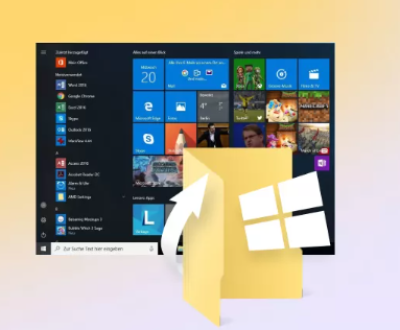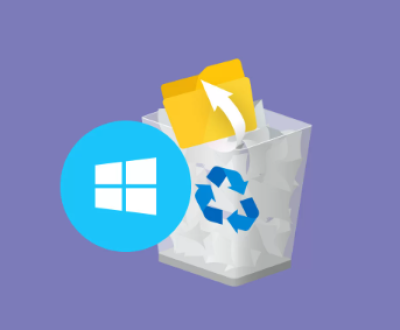When working with operating systems, especially in a Unix – like environment such as Linux or macOS, encountering the error message “Cannot execute binary file: Exec format error” can be a frustrating experience. This error typically occurs when you try to run an executable file, but the system is unable to understand and execute it due to issues related to the file’s format.
What is an Executable Binary File?
An executable binary file is a program that contains machine – readable instructions. These instructions are designed to be executed directly by the computer’s central processing unit (CPU). In Unix – like systems, executable files can have various formats, with the most common ones being the Executable and Linkable Format (ELF) on Linux and the Mach – O format on macOS.
When you try to run an executable file, the operating system kernel first checks the file’s format. If the format is not recognized or is incompatible with the system, it will return the “Cannot execute binary file: Exec format error”.

Possible Causes of the Error
1. Architecture Mismatch
One of the most common causes of this error is an architecture mismatch between the executable file and the system. Different CPUs have different instruction sets, and an executable file is compiled specifically for a particular architecture. For example, an executable compiled for a 32 – bit Intel architecture (x86) will not run on a 64 – bit ARM architecture system.
To check your system’s architecture, you can use the uname -m command in a terminal. For a 64 – bit Intel or AMD system, it will return x86_64. while for a 32 – bit system, it may return i386 or i686. On ARM – based systems, it will show something like armv7l or aarch64.
If you have an executable that was compiled for a different architecture, you will need to obtain a version that is compiled for your system’s architecture.
2. Incorrect File Format
The executable file may have an incorrect or unsupported format. As mentioned earlier, different operating systems use different executable file formats. For instance, if you try to run a Windows executable (usually with a .exe extension) on a Linux system, you will get the “Exec format error” because Linux does not natively support the Windows PE (Portable Executable) format.
Some older or custom – built systems may also use non – standard executable formats. If you are using a system with a unique setup, make sure that the executable you are trying to run is in a format that your system can understand.
3. Corrupted Executable File
A corrupted executable file can also trigger this error. The file may have been damaged during the download process, due to a faulty storage device, or during a transfer between systems.
You can check the integrity of the file by comparing its checksum (such as MD5. SHA – 1. or SHA – 256) with the original checksum provided by the software distributor. If the checksums do not match, the file is likely corrupted, and you should download it again.
4. Missing or Incompatible Interpreter
Some executable files, especially scripts, rely on an interpreter to run. For example, a Python script requires the Python interpreter to execute its code. If the interpreter is missing or the version of the interpreter is incompatible with the script, you may encounter the “Exec format error”.
When you try to run a script, the system looks for the interpreter specified in the shebang line (the first line of the script, starting with #!). If the interpreter is not found in the specified path, the error will occur.
Solutions to the Error
1. Check and Match the Architecture
If the error is due to an architecture mismatch, you need to obtain an executable that is compiled for your system’s architecture.
For Software Repositories: If you are using a package manager like apt on Debian – based systems or yum on Red Hat – based systems, make sure that the package you are installing is available for your architecture. Most package managers will automatically select the appropriate version.
For Compiled Programs: If you are compiling the program yourself, you need to set the correct compiler flags to target your system’s architecture. For example, when using gcc on a 64 – bit system, you can use the -m64 flag to ensure a 64 – bit build.
2. Convert or Use the Correct Format
For Windows Executables on Linux: If you need to run a Windows executable on a Linux system, you can use compatibility layers such as Wine. Wine is a compatibility layer that allows you to run Windows applications on Linux. You can install Wine from your system’s package manager and then run the Windows executable using the wine command.
For Custom Formats: If you are dealing with a custom – built executable format, you may need to develop or obtain a custom loader or interpreter that can handle the format.
3. Verify and Re – download the File
To check if the file is corrupted, you can use checksum verification tools.
MD5 Checksum: On Linux, you can use the md5sum command. For example, if your file is named myapp, you can run md5sum myapp and compare the output with the original MD5 checksum provided by the software distributor.
SHA – 256 Checksum: Similarly, you can use the sha256sum command. If the checksums do not match, delete the corrupted file and download it again from a reliable source.
4. Install or Update the Interpreter
If the error is related to a missing or incompatible interpreter, you need to install or update the interpreter.
Python: If you are running a Python script and get the error, make sure that Python is installed on your system. You can check the Python version using python –version (for Python 2) or python3 –version (for Python 3). If Python is not installed, you can install it using your system’s package manager. For example, on Ubuntu, you can run sudo apt install python3.
Other Interpreters: For other scripting languages like Ruby, Perl, or Bash, follow the same process. Install the interpreter using the package manager and make sure that the shebang line in your script points to the correct interpreter path.
About us and this blog
Panda Assistant is built on the latest data recovery algorithms, ensuring that no file is too damaged, too lost, or too corrupted to be recovered.
Request a free quote
We believe that data recovery shouldn’t be a daunting task. That’s why we’ve designed Panda Assistant to be as easy to use as it is powerful. With a few clicks, you can initiate a scan, preview recoverable files, and restore your data all within a matter of minutes.

 Try lt Free
Try lt Free Recovery success rate of up to
Recovery success rate of up to









